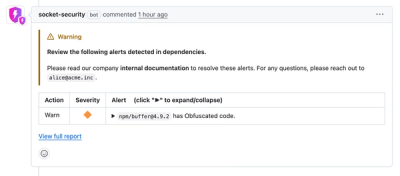
Security News
Crates.io Users Targeted by Phishing Emails
The Rust Security Response WG is warning of phishing emails from rustfoundation.dev targeting crates.io users.
kinto-node-test-server
Advanced tools
A Node and browser API for operating a Kinto test server providing the following features:
Note that a Python virtualenv must be installed in your project, and the kinto pip package installed within that environment.
Node >= v10 is required.
$ npm install kinto-node-test-server --save-dev
$ virtualenv .venv -p python3
$ .venv/bin/pip install kinto
Please make sure to create an appropriately configured Kinto ini file.
Sample usage using mocha:
import KintoServer from "kinto-node-test-server";
describe("Test Kinto server", function() {
let server;
before(function() {
server = new KintoServer("http://0.0.0.0:8888/v1", {
kintoConfigPath: __dirname + "/kinto.ini",
});
});
after(function() {
server.killAll();
});
describe("Default test server", function() {
beforeEach(function() {
return server.start();
});
afterEach(function() {
return server.stop();
});
it("should flush a server", function() {
return server.flush().then(function() {
console.log("yay flushed");
});
});
});
});
If you're using the library in a CommonJS environment, you'll need to use the following to import the library:
const KintoServer = require("kinto-node-test-server").default;
Note that all KintoServer instance methods return Promises.
The browser client follows the same API as the Node client. The browser client requires a proxy server, which you can launch with the following:
import { KintoProxyServer } from "kinto-node-test-server";
const server = new KintoProxyServer();
await server.startServer();
You can then connect to to the proxy server and use the same Node API with the following:
import KintoServer from "kinto-node-test-server";
// Note that the proxy server runs on port 8899
const server = new KintoServer("http://0.0.0.0:8899/v1");
The KintoServer constructor requires the base URL of your kinto server instance and accepts an options object:
maxAttempts: The number of attempts retrying to connect to the server (default: 50)kintoConfigPath: The path to your Kinto ini config file (default: __dirname + "/kinto.ini")pservePath: The path to the .venv pserve executable (default: "pserve"); if the default value doesn't work, try ".venv/bin/pserve".Apache 2.0
FAQs
A node API for operating a Kinto test server.
The npm package kinto-node-test-server receives a total of 345 weekly downloads. As such, kinto-node-test-server popularity was classified as not popular.
We found that kinto-node-test-server demonstrated a not healthy version release cadence and project activity because the last version was released a year ago. It has 5 open source maintainers collaborating on the project.
Did you know?

Socket for GitHub automatically highlights issues in each pull request and monitors the health of all your open source dependencies. Discover the contents of your packages and block harmful activity before you install or update your dependencies.

Security News
The Rust Security Response WG is warning of phishing emails from rustfoundation.dev targeting crates.io users.

Product
Socket now lets you customize pull request alert headers, helping security teams share clear guidance right in PRs to speed reviews and reduce back-and-forth.

Product
Socket's Rust support is moving to Beta: all users can scan Cargo projects and generate SBOMs, including Cargo.toml-only crates, with Rust-aware supply chain checks.